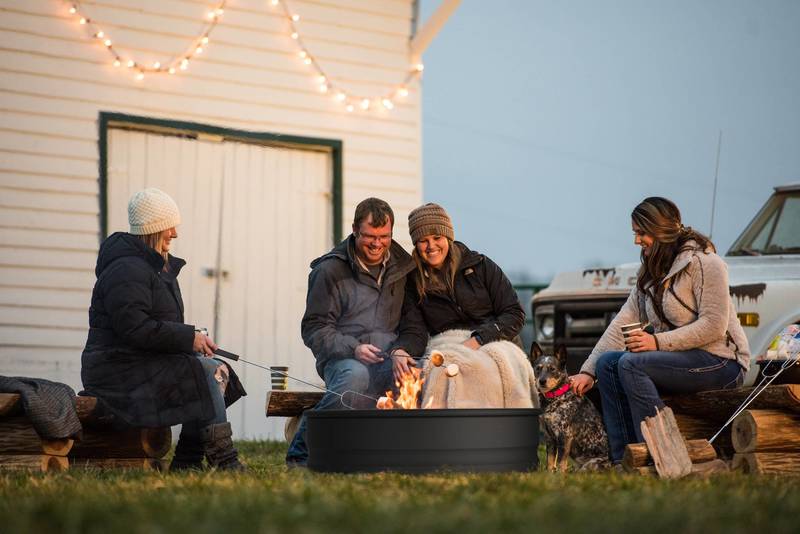
Fire Pit Guide: What You Need to Know
Choosing the right fire pit is essential for transforming your outdoor space into a warm, inviting focal point for gatherings and relaxation. The right selection can enhance the ambiance, offer practical functionality, and ensure safety. In this guide, we'll navigate through the types, materials, safety features, and budgeting considerations to help you make an informed decision for your purchase.
Types of Fire Pits
Fire pits come in various styles, each offering unique benefits to suit different needs and preferences:
Wood-burning:
- Ideal for those who cherish the traditional campfire experience.
- Offers crackling sounds and the classic, smoky aroma.
- Requires space for wood storage and regular maintenance for ash disposal.
Gas:
- Convenient and easy to ignite, providing instant warmth.
- Cleaner alternative with no ash or smoke.
- Requires a gas source—natural or propane—and occasional maintenance of gas lines.
Tabletop:
- Compact and stylish, perfect for smaller spaces.
- Can be highly decorative, adding aesthetic value.
- Generally fueled by small propane tanks or gel fuel canisters.
Portable:
- Offers flexibility to move the fire pit around as needed.
- Suitable for camping or entertaining in different areas of your yard.
- Can be either wood-burning or gas-fueled.
Material Considerations
The material of your fire pit affects durability, maintenance, and appearance. Here are the common materials used:
Steel:
- Lightweight and easy to move, often with a modern design.
- Requires protective coatings to prevent rust.
Cast Iron:
- Durable and excellent at retaining heat.
- Heavy and usually more difficult to move once positioned.
Copper:
- Offers a unique, attractive look as it patinas to a verdigris finish.
- Durable with a need for regular maintenance to prevent tarnishing.
Stone:
- Provides a natural, permanent feel to your outdoor space.
- Typically requires professional installation and can be more expensive.
Safety Features
Safety should be a top priority. Consider the following features:
- Spark Guards: Protect against flying embers and sparks that can ignite nearby materials.
- Fire Pit Covers: Essential for protecting the fire pit when not in use, keeping out debris and moisture.
- Placement: Always position your fire pit away from flammable structures and materials. Ensure there is adequate space for ventilation and movement around the fire pit.
Budgeting
Fire pits are available across a wide range of price points. Here's what to expect:
Entry-level Fire Pits ($50 - $150):
- Basic designs, typically portable and wood-burning.
Mid-range Fire Pits ($150 - $500):
- Offers more style options, including some gas models.
- Better materials and additional safety features like spark guards.
High-end Fire Pits ($500 and above):
- Custom designs and higher-quality materials, often require professional installation.
- May include extra features like built-in seating or integrated lighting.
Conclusion
In summary, choosing the right fire pit means knowing the types available. You should also consider their materials, safety features, and your budget. When you decide, think about how you will use the fire pit. Also, consider the space you have. Finally, think about how it will fit into your outdoor design.
Checklist for Buyers:
- Determine the fire pit type that suits your lifestyle.
- Evaluate materials based on durability and maintenance.
- Prioritize safety features and proper placement.
- Set a budget and explore options within your price range.
- Take advantage of additional features such as portability or aesthetic design.
To read more about proper usage of a Tarter Home portable fire pit read here
